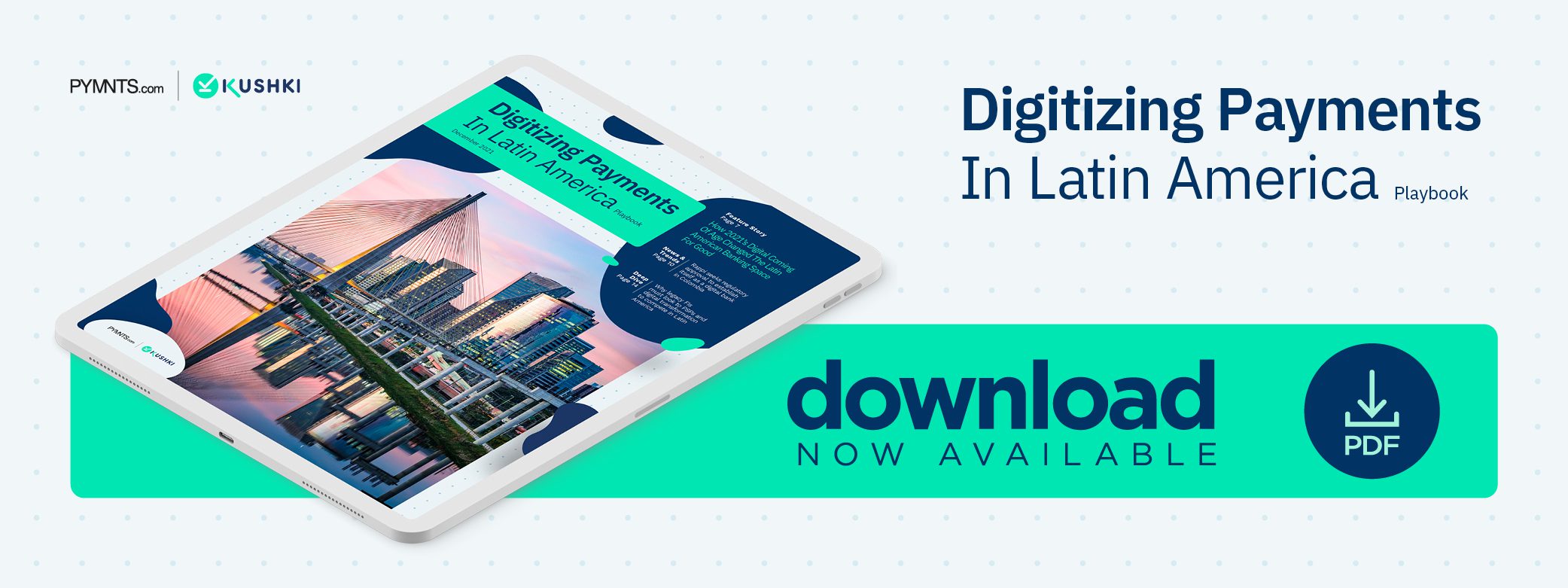Deep Dive: How Legacy FIs Can Look to PSPs, Digital Transformation to Compete in Latin America

Consumers in Latin America have embraced online banking tools in increasing numbers over the past few years, and the pandemic is accelerating this trend as more consumers test out emerging digital-first financial solutions. Recent studies highlight banking services’ low penetration in the region, however, with one report finding that 70% of LatAm consumers do not have traditional bank accounts. What is notable about this finding is that consumers may not need such accounts to take advantage of digital banking technologies.
The number of FinTechs and neobanks offering online financial solutions that enable consumers to send or receive funds virtually without traditional bank accounts is rising rapidly across the region. Consumers’ payment preferences are shifting away from cash and toward digitally connected methods such as virtual wallets and QR codes — even for everyday transactions. One report found that neobank customers in Latin America more than doubled between 2019 and 2021, growing from 36.7 million to 77 million consumers.
These developments have massive implications for Latin America’s legacy banks. They must capture the attention of the region’s digitally minded consumers even as more nimble, digital-first or digital-only banks and FinTechs enter the market. Enticing new customers and keeping existing ones satisfied will be paramount, and financial institutions (FIs) will need to innovate their payment services and solutions with digitization in mind.
The following Deep Dive analyzes the hurdles legacy banks face when engaging newly digital LatAm consumers and how teaming up with payment service providers (PSPs) and other industry partners can help them meet those challenges. It also examines how LatAm consumers’ banking habits could shift in the years ahead, and how banks can ensure they keep pace with these changes.
Tilting the Digital Banking Scales
Legacy banks, neobanks and FinTechs alike must pay careful attention to consumers’ evolving payment and banking preferences. The region’s unbanked population remains high, but public health and safety guidelines imposed during the global health crisis have led a record number of consumers to experiment with digital payment tools. Consequently, cash use in Latin America has plunged during the pandemic, with one study pointing to a 32% decline in cash payments since 2019.
A separate study from 2020 found that mobile commerce has become particularly attractive to LatAm customers, growing nearly 34% in Mexico and 76% in Argentina from 2019 to 2020. Mobile penetration in Latin America also is inching upward, with a separate report finding that smartphone connections will reach 500 million by the end of this year, marking an overall adoption rate of 74% throughout the region.
This means legacy banks have a key opportunity to engage LatAm consumers as interest in and comfort with online payments solutions grow, especially those connected to mobile devices. Neobanks and FinTechs can also work to establish dominance in the market, however, as both legacy FIs and digital entrants represent unknowns for many consumers who are trying digital banking tools for the first time.
FinTechs are growing steadily in number throughout the region, with one report determining that there are about 700 financial services providers operating in Brazil alone. Five hundred FinTechs are offering their solutions to consumers in Mexico, and 200 operate in Colombia.
As such, FIs eager to stand out from the competition are pushing to quickly innovate offerings that can match or exceed those of neobanks or FinTechs. Partnering with PSPs is one option that can put legacy institutions on equal footing with the market’s other emerging players, especially as LatAm consumers seek out swifter and more connected digital-first payment experiences.
The Digital Transformation Challenge
Most of the region’s legacy banks are aware of the digital challenges at hand. For example, ne recent study found that nearly 56% of financial professionals believe that financial inclusion represents the greatest opportunity for growth in Latin America, and 30% of those surveyed said their best option for expansion was digital transformation.
Forging lasting partnerships with the region’s PSPs could be critical to helping legacy banks achieve both their digital transformation and financial inclusion goals. Doing so can enable FIs to offer seamless digital payment options to consumers, thus gaining their interest and capturing their loyalty and business.
Successfully engaging Latin America’s digital-first consumers is necessary as the region’s banking environment becomes more saturated, making it imperative for financial entities to continue innovating their offerings to match consumers’ needs.

